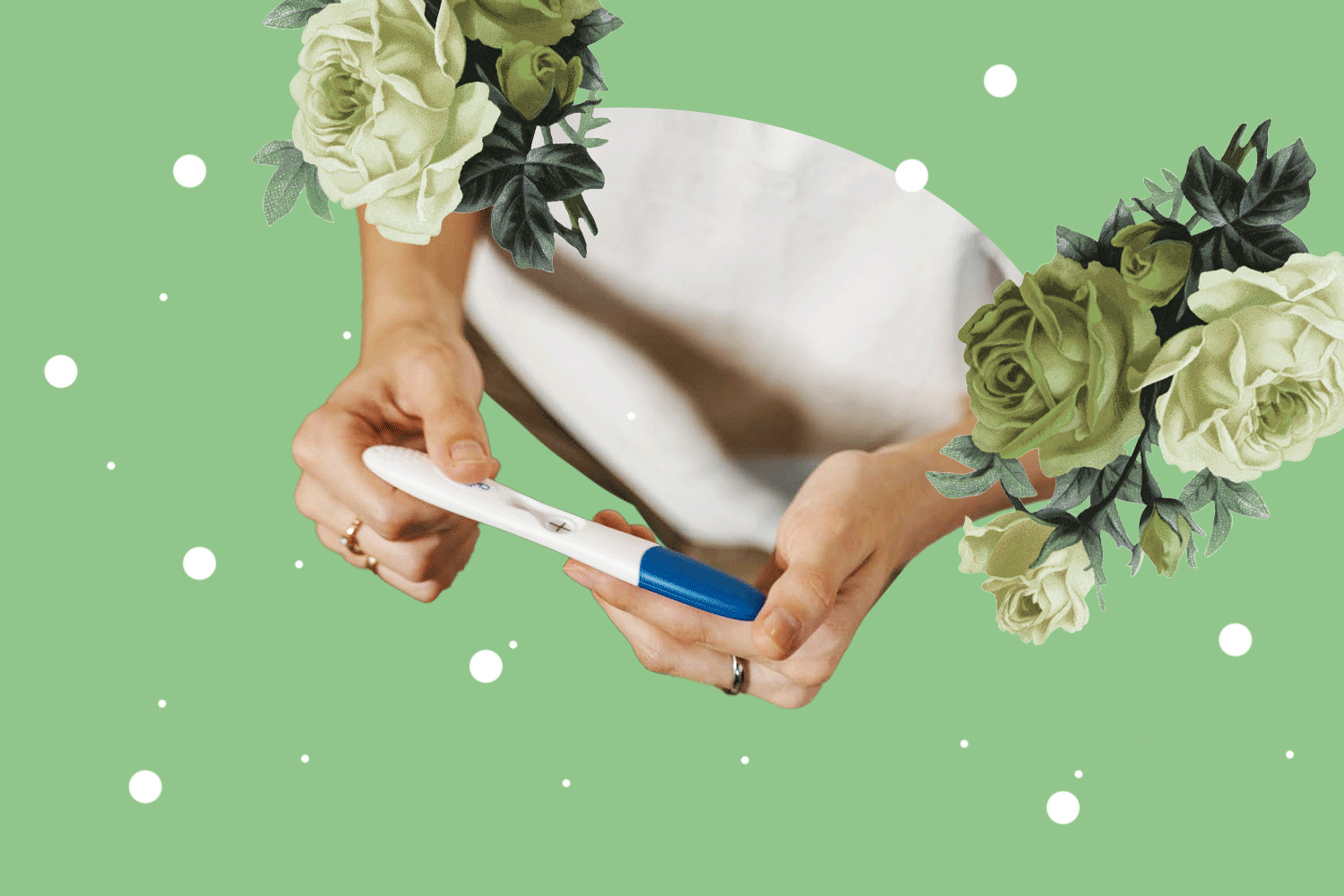Yes, You Can Get Pregnant when You’re Already Pregnant
Getting pregnant when you are already pregnant – seems impossible, right? Not necessarily.

This rare occurrence of getting pregnant during an existing pregnancy is known as “superfetation”, and it happens when a woman who is already pregnant becomes pregnant a second time, ultimately giving birth to twins who are a few days or weeks apart in gestation.
Superfetation is extremely rare, and there are few reported cases in medical literature. Very little is actually known about the condition, how it works, and what causes it to happen.
With this article, we aim to share a bit more about what superfetation is, the biological processes behind it, and potential causes and risks associated with it. We’ll also shine a spotlight on notable, real-life cases of successful superfetation worldwide.
Can you get pregnant when pregnant?
Although rare, yes it is possible to get pregnant while you are already pregnant. This phenomenon is called superfetation, and it occurs when a pregnant woman becomes pregnant again after an initial fetus already exists.
In extremely rare cases, it is also possible for heteropaternal superfetation to occur. In this case, the second fetus has a different father from the initial fetus.
Understanding superfetation
As of 2021, there are around 10 medically documented cases of superfetation in humans. It is so rare that little medical research has been done to study exactly what causes it, the likelihood of it happening, and potential symptoms.
Surprisingly, superfetation is actually quite common and well-documented in mammals such as panthers, buffalos, and hares. However, it is an extraordinarily rare occurrence among humans due to the biological processes that must take place for it to happen.
In successful superfetation cases, a woman will give birth to two babies. However, one will be developmentally further along than the other, usually by a few weeks. This age difference can cause complications for both the mother and the babies during pregnancy.
What are your chances of it happening?
Due to lack of research, there is no specific number or range to describe the average pregnant individual’s “chances” of getting pregnant twice. However, doctors and medical experts tend to agree that the odds of it occurring are “extremely small”, with Good Morning America reporting that the chances of it happening are “one in several million”. One doctor explained that you are more likely to win the lottery or get struck by lightning than have a superfetation pregnancy.
How pregnancy works when you’re already pregnant
If superfetation does occur in pregnant women, how exactly does it work? Here’s a brief overview of what’s happening in the body, potential signs and symptoms, and the risks associated with superfetation pregnancies.
What’s happening in your body?
For superfetation to occur, the first thing that must take place in the body is ovulation – i.e. the release of an additional egg even after you are already pregnant. Without this second egg, a second conception cannot happen.
In typical pregnancies, pregnancy hormones like hCG (human chorionic gonadotropin), estrogen, and progesterone prevent ovulation from happening after implantation. However, in cases of superfetation, ovulation continues even though a fertilized egg is already successfully implanted.
The second step necessary for superfetation to occur is fertilization. That means that once an egg is released, it must be fertilized by a sperm. To conceive, sperm must travel through the vagina and cervix in order to reach an egg in the fallopian tubes.
In normal pregnancies, a woman’s cervical mucus becomes increasingly sticky and thick in order to prevent new sperm, bacteria, or viruses from reaching the uterus. It eventually forms a “mucus plug” and acts as a protective barrier throughout pregnancy. In cases of superfetation, a second sperm must be able to travel through this protective mucus barrier in order to find and fertilize a second egg.
Once fertilization happens, the fertilized egg must then not only be able to find a spot in an already occupied uterus, but it must also endure the implantation process. Considering the fact that in typical pregnancies, the body will have stopped producing key hormones that aid with implantation, this process for the second fertilized egg can be extremely difficult.
If all three of these events are able to take place in an existing pregnancy, superfetation is possible. However, the chances of all three happening successfully are extremely low.
Are there any symptoms or signs?
Aside from the typical pregnancy symptoms, there are no specific tell-tale signs of superfetation that can be “felt” or “experienced” by the mother.
It will not be until you have an appointment with your doctor that you will know whether or not you are carrying multiples. Early in a superfetation pregnancy, doctors often simply assume that you are having twins. Over time though, they may notice that one fetus is larger in size than the other. This condition is called “twin growth discordance”, and in addition to superfetation, growth discordance can also be caused by intrauterine growth restriction (IUGR), placental insufficiency, or twin-to-twin transfusion syndrome.
Even after multiple ultrasounds and tests by your doctor, it may take some time for them to be able to give a diagnosis of superfetation – especially considering how rare the condition is. Surprisingly, in one documented case, superfetation was not even diagnosed until after birth.
Does anything cause it?
There are no specific causes behind why superfetation happens. However, many of the reported cases have occurred in women already undergoing certain fertility treatments, such as in-vitro fertilization (IVF). For example, it is possible to ovulate even after a fertilized egg has already been transferred to the uterus via IVF. If the second egg released through ovulation becomes fertilized, then it is possible to become pregnant “again” shortly after an IVF procedure.
Another possible cause is if the initial embryo takes a bit longer than normal to implant itself in the uterus. In theory, this can prevent the initial surge of pregnancy hormones from happening, making it easier for a second egg to become fertilized and implant itself.
In one case, doctors blamed fertility medication for causing superfetation to occur. However, there is limited medical research to support this claim.
When can it occur?
Superfetation typically occurs within the first few days or weeks after an initial egg is fertilized and implanted. However, there is little research or data that can pinpoint when exactly superfetation is the most likely to take place in existing pregnancies.
Are there any risks?
While there are successful reports of superfetation, there are a few risks involved with this type of pregnancy.
The primary risk is that the second fetus will be developmentally behind the first fetus in the womb. This means that at birth, the second fetus risks being born prematurely. A premature birth can increase a child’s likelihood of experiencing complications such as:
- Breathing issues
- Intestinal problems
- Developmental delay
In addition to the risks associated with the baby, mothers of twins are also at an increased risk of developing preeclampsia, gestational diabetes, and iron deficiency anemia.
What about ovulation? Can you ovulate when pregnant?
For the vast majority of pregnancies, no. it is not possible to ovulate while you are pregnant. This is because after implantation, your body ramps up the production of pregnancy hormones, such as estrogen, progesterone, and hCG, to support a pregnancy. In turn, the body halts all other “normal” processes of a typical menstrual cycle – including ovulation. This is also why you will not get a period during pregnancy.
However, in rare cases of superfetation, ovulation does find a way to happen even after an initial pregnancy already exists. This is why superfetation is such an extraordinary phenomenon.
Pregnant while pregnant anecdotes
There are very few reported cases of superfetation (less than 10 documented in medical research worldwide) – here are three of the most notable cases.
Kate Hill – Australia
Kate and Peter Hill are a couple from Australia who waited years to get pregnant. Kate, who struggled with polycystic ovarian syndrome (PCOS), began taking fertility hormones to aid with conception and in 2016 finally became pregnant.
However, two weeks after her initial conception, Kate somehow conceived again and went on to successfully give birth to non-identical twins via c-section. Speaking with Today Tonight Adelaide, Kate shares that doctors gave her two separate conception and delivery dates for her pregnancy, which would come as a shock to any mother. Kate’s doctor also shared that he struggled to find cases of superfetation in the medical literature – admitting that he used Google a lot throughout her pregnancy.
Despite all the odds, Kate and Peter now have two healthy children and are a rare example of successful superfetation.
Rebecca Roberts – United Kingdom
One of the most recent cases is Rebecca Roberts from the United Kingdom. Rebecca and her partner, Rhys, had been trying to conceive for several years. Similar to Kate, Rebecca began taking fertility medication and eventually conceived in 2020.
At her standard 12-week appointment, Rebecca’s doctor discovered that she was not only carrying two babies, but that the babies were approximately three weeks apart in development. This came as a huge surprise to both Rebecca and her doctors, who had never seen a case like this before.
After some confusion and further research, doctors eventually diagnosed Rebecca’s pregnancy as a case of superfetation. Rebecca managed to continue the pregnancy until 33 weeks, where she had to be induced due to growth complications with the second baby.
In September of 2020, Rebecca gave birth successfully to a son (weighing 4 pounds, 10 ounces) and a daughter (weighing 2 pounds, 7 ounces). Because Rebecca’s daughter was born as a 30-week gestation baby, she did have to spend 95 days in an intensive care unit.
At three weeks apart, Rebecca’s case is especially rare and her twins are considered to have the biggest known age difference among superfetation cases.
Jessica Allen – United States
Another unique case of superfetation happened in the United States. Jessica Allen from California was serving as a surrogate mother for another couple. Initially, she became impregnated with the couple’s fertilized egg via IVF. However, a few days later, she conceived again naturally with her partner.
Jessica only discovered that she was pregnant with twins at week six of pregnancy. However, her doctors did not suspect superfetation this early on, and they instead assumed that the initial embryo had split into two.
Jessica went on to have a successful delivery, thinking that she was giving birth to the couple’s twins. However, after giving birth and seeing photos of the twins, Jessica began to notice differences in their appearance, specifically their skin tone. One month later, a DNA test was taken and it was discovered that one of the babies was biologically Jessica’s.
After a long court battle, Jessica finally received full custody of her son who she did not even know was hers until a month after giving birth. Jessica’s case is extremely rare considering both babies have completely different sets of parents.
Mira’s Editorial Process
All content produced by Mira meets stringent editorial standards, ensuring excellence and accuracy in language and medical precision. Every piece undergoes thorough fact-checking and review by qualified professionals. Check out our full editorial process to learn more.




